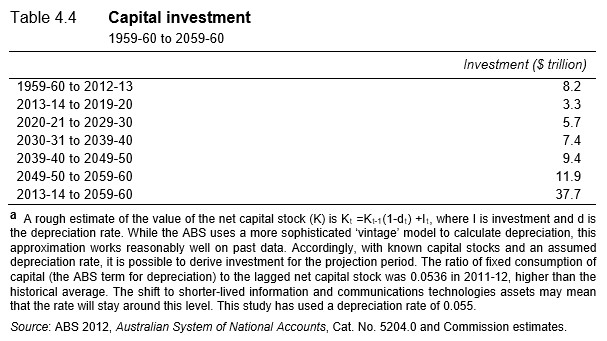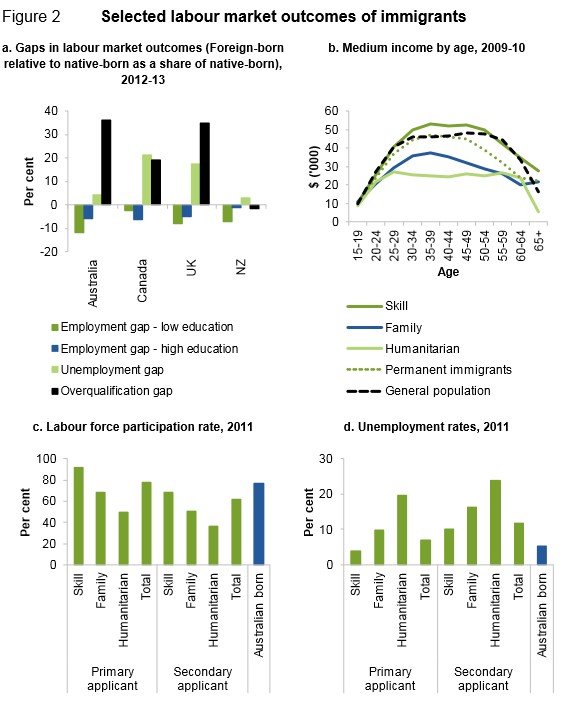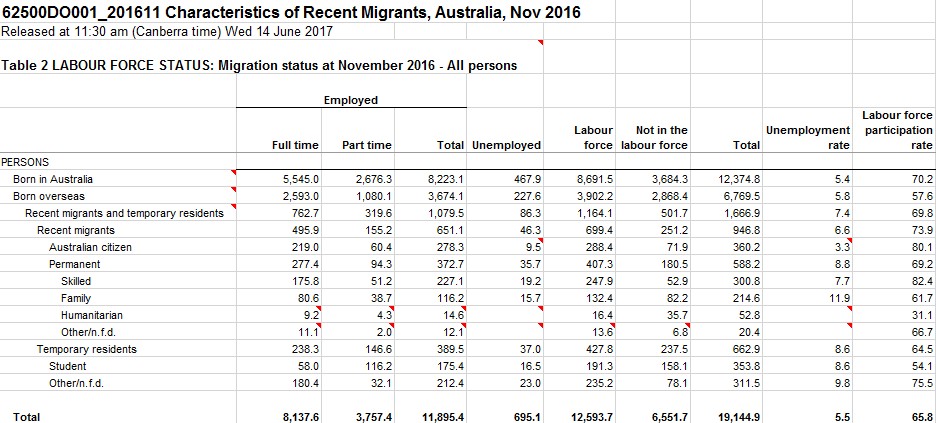The Australian’s David Uren has penned an article in support of mass immigration and a ‘Big Australia’, claiming that it is central to Australia’s economic success and that “fertile, educated Asians are saving our economy”:
Rising house prices and congestion on the roads could be blamed as readily on bureaucratic council planning departments and shortsighted state governments, but elevated migration rates have become a lightning rod for discontent. Subdued growth in living standards worldwide has seen the rise of populism that blames the malaise on external forces, whether that is foreign capital, trade or migrants. This has been evident on both sides of Australian politics with the pressure to rein in temporary migration under the 457 visa program. Tony Abbott has made cuts to migration a central theme in his conservative backbench campaign.
Yet the census underlines the contribution migration is making to the national economy, raising the level of skills and growth while reducing the pressure of an ageing population on living standards and government finances.
It is sometimes argued that migrants have little effect on the ageing of the population because they age as just as rapidly as the Australian-born population. However, the profile of the cohort arriving matters a great deal. That is shown starkly in an Australian Bureau of Statistics comparison of the age profiles of Asian and European migrants. The great waves of European migration came to Australia in the 1950s and 60s and are now retiring. The census shows 40 per cent of European migrants are 65 or older while only 17 per cent are under 35.
By contrast, the new wave of Asian migration is young, with 48 per cent under 35 and only 8 per cent over 65…
Estimates by University of Melbourne demographer Peter McDonald show that in the absence of migration, the share of the population 65 and older would rise from 14 per cent now to 28 per cent by 2053.
Maintaining current migration levels of 180,000 to 200,000 a year with the age profile of current immigrants would lower this to 22 per cent, almost halving the impact of the ageing population caused by declining fertility and increasing life expectancy…
When the global financial crisis hit in 2008-09, Australia was receiving a record 300,000 migrants. Household expenditure per person fell, but the influx of migration meant total spending kept rising and retailers maintained staffing levels…
There has been some evidence of this benefit during the five years since the resources boom peaked in 2011. McDonald estimates that of the 750,000 new jobs generated since 2011, 80 per cent have been filled by new migrants. Without that migration, employment and the economy at large would have stagnated…
The focus of the current migration program on students and skills means that their age and education profile is more favourable than the resident population…
Migration levels could be cut, and the tightening of temporary work visas looks like a first step in that direction. However, it would be attacking a source of Australia’s economic dynamism.
There is so much bullshit here it is hard to know where to start.
First, Uren’s claim that Australia’s housing and infrastructure woes (principally in Sydney and Melbourne) should be blamed on “bureaucratic council planning departments and shortsighted state governments” doesn’t pass the laugh test.
According to the Census data, Sydney’s population surged by 705,000 (+17%) and Melbourne’s by 893,000 (+25%) in the decade to 2016, representing growth of around 1,350 and 1,700 people per week respectively over the decade. Even the world’s best planning system would have struggled to cope with such an unrelenting influx of people.
On this issue of infrastructure, David Uren would do well to read the Productivity Commission’s (PC) final report on An Ageing Australia: Preparing for the Future, which warned that total private and public investment requirements over the 50 year period to 2060 are estimated to be more than 5 times the cumulative investment made over the last half century:

Worse, this estimate was based on a population projection of 38 million, which has since been upgraded by the PC to 40 million. Good luck with meeting such a massive infrastructure requirement!
Uren should also read the PC’s more recent Migrant Intake into Australia report, where the PC explicitly warned that [my emphasis]:
Governments have not demonstrated a high degree of competence in infrastructure planning and investment. Funding will inevitably be borne by the Australian community either through user-pays fees or general taxation.
Get that highlighted bit: there will be higher user-pays fees and taxation for the incumbent population to cope with the population influx.
Second, David Uren’s claim that migrants are boosting Australia’s skills base is not borne out in the data.
The PC’s Migrant Intake Australia report found that while primary skilled migrants have slightly better labour market outcomes than the Australian born population in terms of median incomes, labour force participation, and unemployment rates, secondary skilled visas, and indeed all other forms of migrants, have worse outcomes:

Moreover, the Australian Bureau of Statistics (ABS) latest Characteristics of Recent Migrants report, released this month, revealed that migrants have generally worse labour market outcomes than the Australian born population, with recent migrants and temporary residents having an unemployment rate of 7.4% versus 5.4% for the Australian born population, and lower labour force participation (69.8%) than the Australian born population (70.2%):

Third, Uren’s claim that Australia needs mass immigration to prevent an ageing population has been debunked for more than a decade by the PC:
- PC (2005): “Despite popular thinking to the contrary, immigration policy is also not a feasible countermeasure [to an ageing population]. It affects population numbers more than the age structure”.
- PC (2010): “Realistic changes in migration levels also make little difference to the age structure of the population in the future, with any effect being temporary“…
- PC (2011): “…substantial increases in the level of net overseas migration would have only modest effects on population ageing and the impacts would be temporary, since immigrants themselves age… It follows that, rather than seeking to mitigate the ageing of the population, policy should seek to influence the potential economic and other impacts”…
- PC (2016): “[Immigration] delays rather than eliminates population ageing. In the long term, underlying trends in life expectancy mean that permanent immigrants (as they age) will themselves add to the proportion of the population aged 65 and over”.
In short, trying to overcome an ageing population through higher immigration is a Ponzi scheme. It requires ever more immigration, with the associated negative impacts on economic and social infrastructure, congestion, housing affordability, and the environment.
Uren’s acknowledgement that European migrants are now old, after arriving here young in the 1950s and 1960s, illustrates this fallacy. Today’s wave of Asian migrants will similarly age, creating huge demographic pressures from mid-century.
Fourth, Uren’s claim that “during the five years since the resources boom peaked… of the 750,000 new jobs generated since 2011, 80 per cent have been filled by new migrants” is hardly cause for celebration, since it suggests that Australian born resident workers have been displaced by migrants, lowering their bargaining power and wages in the process. What’s the point of creating jobs if almost all of them go to new arrivals? It’s like spinning your tyres without actually going anywhere.
If Uren’s idea of “economic dynamism” is overcrowded cities, smaller and more expensive homes, lower wages, and a degraded environment, then why doesn’t he move to the sub-continent?

